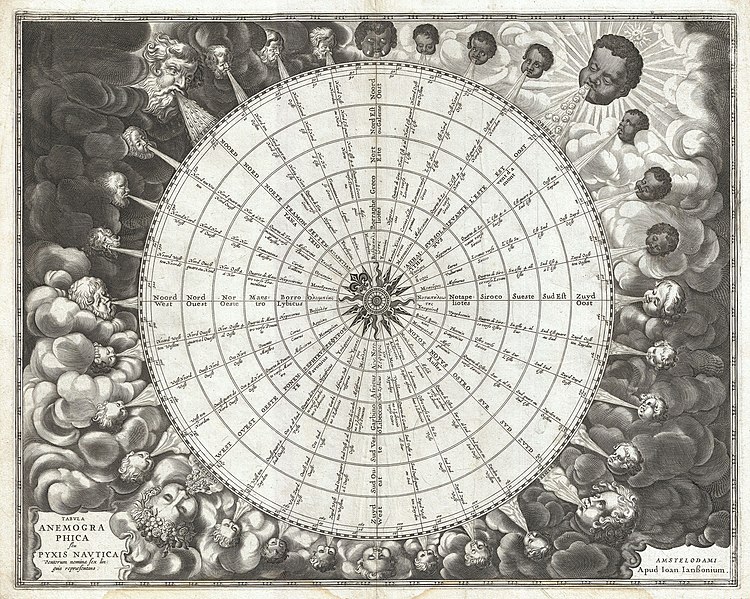Datei:1650 Jansson Wind Rose, Anemographic Chart, or Map of the Winds - Geographicus - Anemographica-jannson-1650.jpg
Zur Navigation springen
Zur Suche springen

Größe dieser Vorschau: 750 × 599 Pixel. Weitere Auflösungen: 301 × 240 Pixel | 601 × 480 Pixel | 961 × 768 Pixel | 1.280 × 1.023 Pixel | 2.560 × 2.045 Pixel | 5.000 × 3.995 Pixel
Originaldatei (5.000 × 3.995 Pixel, Dateigröße: 7,38 MB, MIME-Typ: image/jpeg)
Dateiversionen
Klicke auf einen Zeitpunkt, um diese Version zu laden.
| Version vom | Vorschaubild | Maße | Benutzer | Kommentar | |
|---|---|---|---|---|---|
| aktuell | 22:51, 23. Mär. 2011 |  | 5.000 × 3.995 (7,38 MB) | BotMultichillT | {{subst:User:Multichill/Geographicus |link=http://www.geographicus.com/P/AntiqueMap/Anemographica-jannson-1650 |product_name=1650 Jansson Wind Rose, Anemographic Chart, or Map of the Winds |map_title=Tabula Anemographica seu Pyxis Nautica Ventorum Nomina |
Dateiverwendung
Die folgende Seite verwendet diese Datei:
Globale Dateiverwendung
Die nachfolgenden anderen Wikis verwenden diese Datei:
- Verwendung auf el.wikipedia.org
- Verwendung auf nl.wikipedia.org